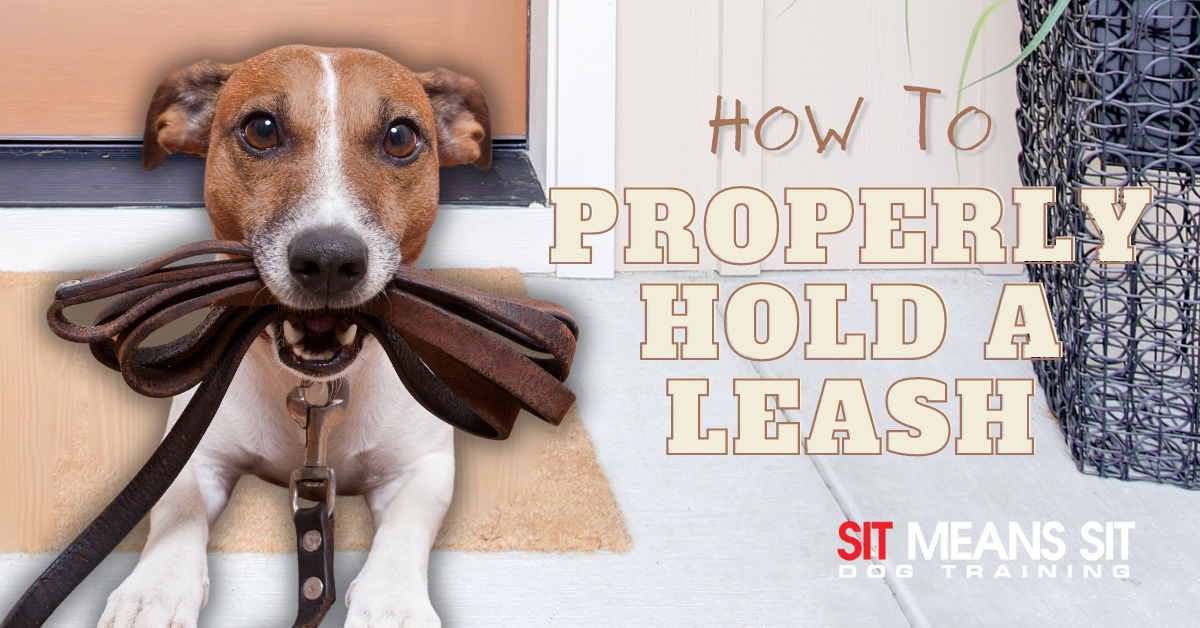
How to Properly Hold Your Dog’s Leash
Dogs love, and I mean love to go on walks. Dogs that have been trained how to walk with good leash manners have fewer leash behavioral issues. Additionally, they (and their caretakers) avoid body soreness that results from too much pulling. Having a good grip on your pal’s leash will keep you in control of your pup and keep you from dropping the leash. This will keep your walks fun and safe. The way a leash is held can make a huge difference in the quality of walks.
Three Options
1. The Thumb Grip
Place your thumb in the handle loop and then loop some slack over your thumb again. Close your fist around the leash layers with your thumb across the top and the rest of the leash leaving your hand by your pinky. Your first hand is your anchor hand. Alter the remaining leash length available with the place of your second hand. The leash should also exit this hand on the pinky side. Your anchor hand controls the slack by allowing looks of slack to be dropped as wanted.
2. The Finger Grip
Similarly, place your thumb in the handle loop of the leash. Grab some slack and loop it over the first finger of the same hand to enter your palm again. If you’d like, you can make more slack loops. Close your fist around the layers allowing the leash to exit on the pinky side of your anchor hand. If you desire more slack for your pup, release the slack from your anchor hand by opening it with your thumb facing up. Close your fist again to re-set the anchor.
3. The Accordion Grip
You have the option to place the loop over your thumb or around your knuckles but is often not wrapped around the hand. Layer the leash a few times across your palm and then close your fist around it. As before, let the leash exit your hand by your pinky, creating your anchor hand. This grip makes it easy to switch hands during your walk with your companion.
Leash-Holding Don’ts
Not all leash grips are recommended. For example, don’t:
- wrap the leash around your arm, wrist, or hand
- attach the leash to a belt loop
- hold anything else in your anchor hand beside the leash
- be distracted from your dog on your walk
- hold your dog close with a tight leash
- hold the leash in the air to remove slack
Picking the Right Leash
Style
Standard leashes have a loop at one end and a clip at the other. They are generally the best option for most dog owners. This is because they provide great control and don’t have any complicated components. Additionally, they work well with the grips listed above.
Retractable leashes are common but are not good for dogs learning to not pull on the leash. They are potentially dangerous because of the possibility of rope burns and varying walking ranges. Also, you can not use preferred leash holding grips, giving you less control over your companion.
Material
Nylon is a great option because they are strong and weather resistant. A leash made from nylon is reliable and will last you a long time.
Cotton is a material that is light and flexible while being soft in your hand. Cotton leashes are very absorbent and not always chew-proof.
However, a chain or cable is very chew-resistant. They weigh more than other materials, are strong, and last a long time but tend to rust.
Leather leashes are strong and lightweight. Additionally, they are more comfortable than chain or nylon in the hand. However, they are not very chew-resistant and are hard to clean. As a result, they may not last you as long as other material options.
Length
Standard leash lengths range from 4-6 feet. This allows your pup to have enough length to explore without having to deal with too much slack. You have a lot of control with standard leash lengths.
Long leashes are a great option for training. This allows you to still have control of your pal in case they get distracted while training. Additionally, they are fun for your pup if you are in a large and open space. However, they have a lot more slack to keep track of that can get wrapped around objects and people.
Tabs are very short leashes that are usually less than a foot long. Tabs are used to train dogs to transition to off-leash behavior. This length allows for safe maneuvering through crowds and for closer supervision.
Though your furry friend may not prefer leash walking, it is important to train leash walking for the safety of both you and your pup. Walking with your pal is a great way to share the fun with them. Using leash skills will allow you to continue your excursions with your pup while staying safe and happy.
